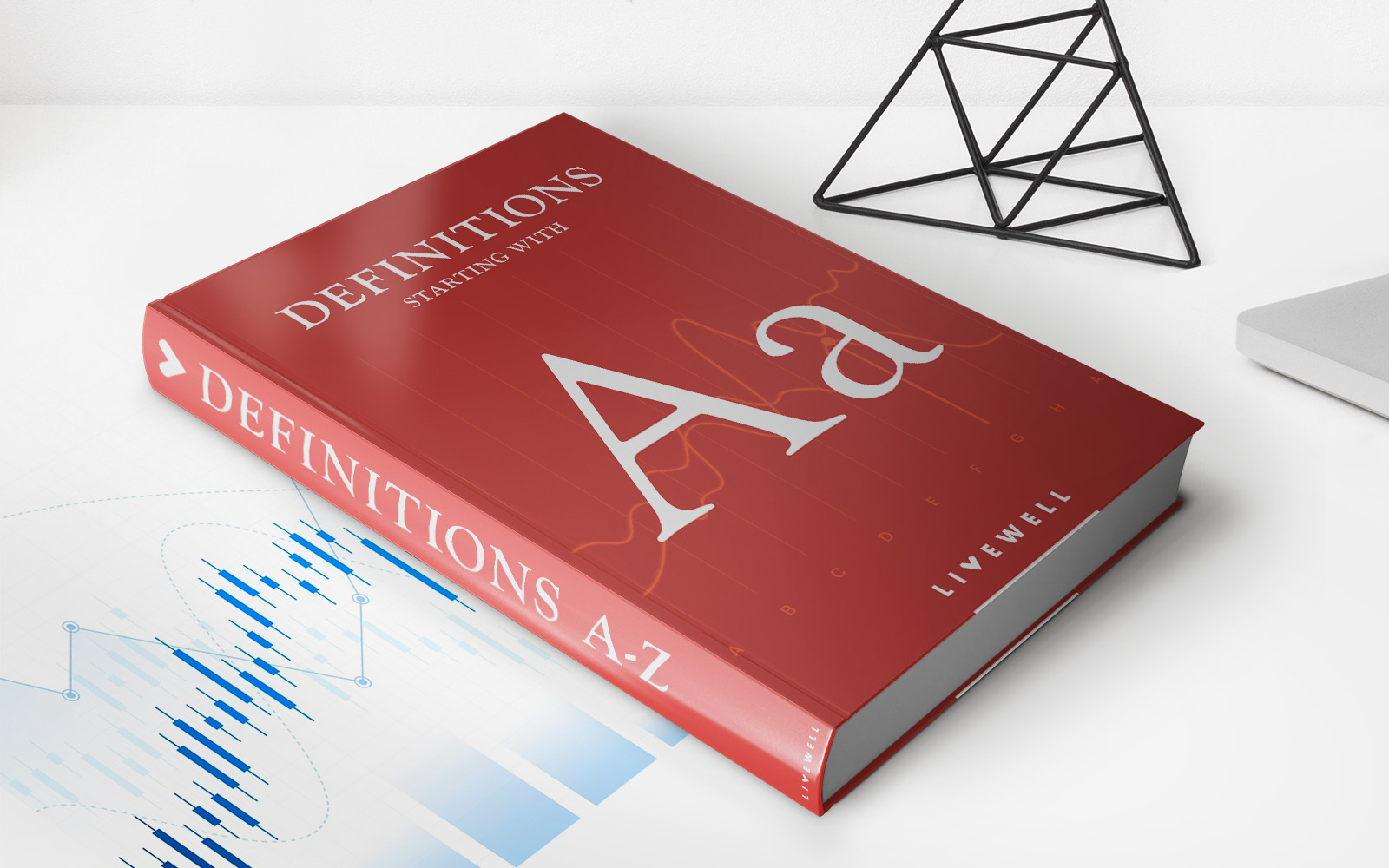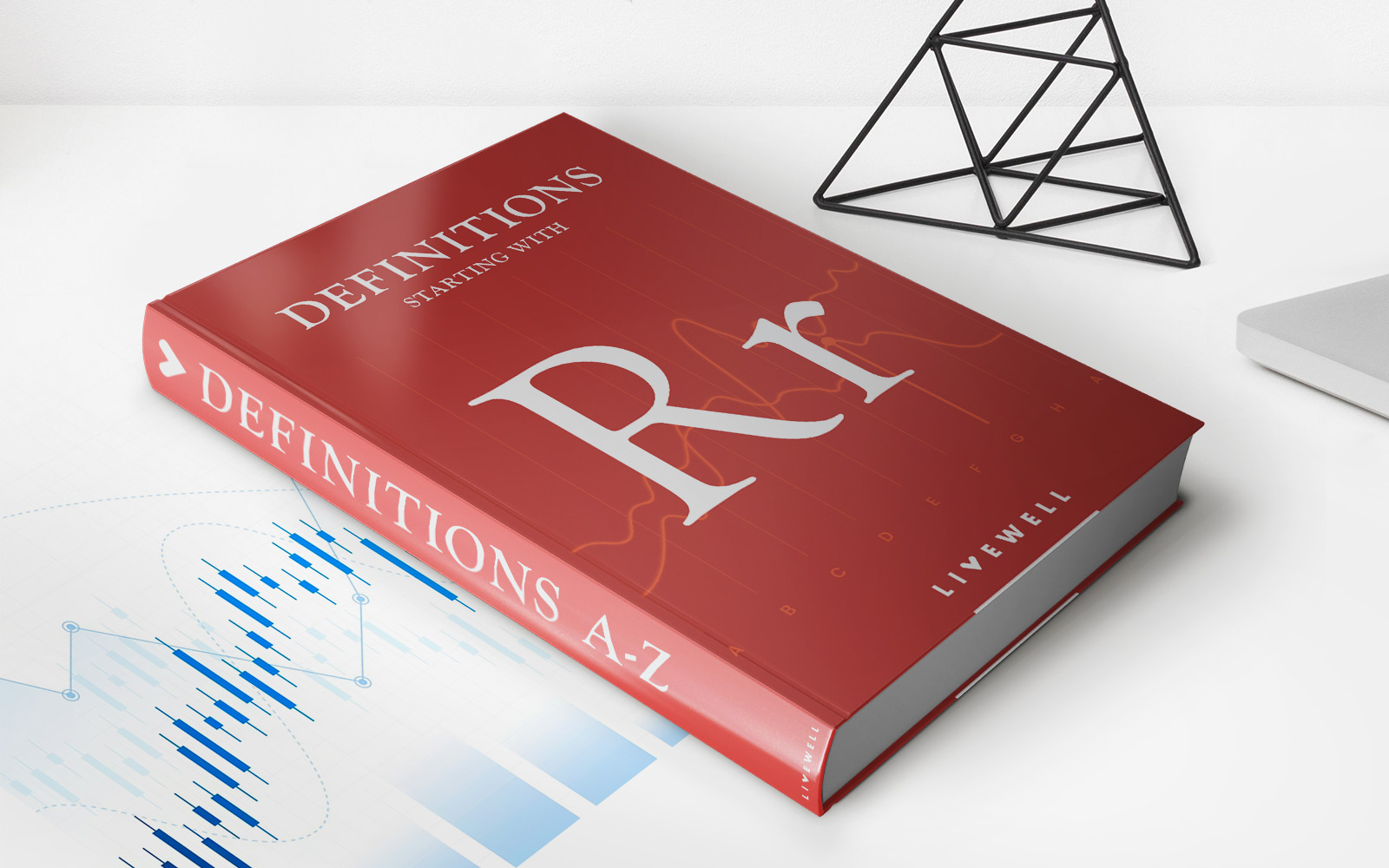Home>Finance>Co-Owned Certificates Of Deposit When One Owner Dies


Finance
Co-Owned Certificates Of Deposit When One Owner Dies
Modified: February 21, 2024
Co-Owned Certificates of Deposit: Finance your future with peace of mind. Discover how to navigate the complexities of co-ownership when one owner passes away to ensure a secure financial legacy.
(Many of the links in this article redirect to a specific reviewed product. Your purchase of these products through affiliate links helps to generate commission for LiveWell, at no extra cost. Learn more)
Table of Contents
- Introduction
- Understanding Co-Owned Certificates of Deposit (CDs)
- Consequences of One Owner’s Death
- Options for the Surviving Owner
- Joint Tenancy with Right of Survivorship (JTWROS)
- Transfer-on-Death (TOD) Designation
- Payable-on-Death (POD) Designation
- Naming Multiple Beneficiaries
- Other Considerations
- Conclusion
Introduction
When individuals invest their hard-earned money in financial instruments such as certificates of deposit (CDs), they want to ensure that their assets are protected and transition smoothly to their intended beneficiaries. In the case of co-owned certificates of deposit, things can become a bit more complex when one of the owners passes away.
Co-owned certificates of deposit, also known as joint CDs, are financial products that allow multiple individuals to hold equal ownership rights and responsibilities. This can be a convenient way for family members, spouses, or business partners to pool their resources and earn interest on their savings.
However, when one of the co-owners of a CD passes away, it is crucial to understand how the situation will be handled and what options are available for the surviving owner. This article aims to provide a comprehensive overview of the consequences of the death of one owner and the various methods to navigate this scenario.
By gaining a better understanding of the available options, individuals can make informed decisions to protect their investments and ensure a smooth transition of assets in the event of the death of a co-owner.
Understanding Co-Owned Certificates of Deposit (CDs)
Certificates of Deposit (CDs) are a popular investment vehicle for individuals looking for a secure and low-risk way to grow their savings. When two or more individuals decide to invest in a CD together, they become co-owners, each holding an equal share of the investment. This co-ownership arrangement can offer certain advantages and considerations.
Co-owned certificates of deposit are typically opened at banks or credit unions. The initial investment is divided equally among the owners, and all parties are responsible for any penalties or fees associated with early withdrawal or account closure. The interest earned on the CD is also shared equally amongst the co-owners.
One of the main benefits of co-owned CDs is the ability to pool resources and take advantage of higher interest rates that may be offered on larger investments. Additionally, co-owners can enjoy the convenience of having joint access to funds and the ability to manage the account jointly.
It is important to note that co-owned CDs come with certain limitations as well. For example, each owner may have to provide consent before any changes can be made to the account, such as withdrawing funds or closing the CD before maturity. Furthermore, if one co-owner wishes to withdraw their share of the funds early, it is typically required to obtain the consent of all other co-owners.
In the unfortunate event of the death of a co-owner, it is vital to understand the implications and the steps that need to be taken to ensure a smooth transition of the CD and the associated assets.
Now that we have a foundational understanding of co-owned certificates of deposit, let’s dive into the consequences that occur when one owner passes away and explore the available options for the surviving owner.
Consequences of One Owner’s Death
When one owner of a co-owned certificate of deposit (CD) passes away, it triggers a series of consequences and considerations for the surviving owner. These consequences can vary depending on the specific ownership structure and the arrangements made at the time of opening the CD.
One of the primary impacts of the death of a co-owner is that the deceased owner’s share of the CD becomes part of their estate. This means that the funds held in the CD will be subject to the probate process, which can delay the transfer of assets to the intended beneficiaries.
During the probate process, the court will validate the deceased owner’s will, determine the rightful beneficiaries, and oversee the distribution of assets. This process can take several months or even years, depending on the complexity of the estate and any challenges or disputes that may arise.
Another consequence is that the surviving owner may lose immediate access to the funds held in the CD. This can potentially create financial difficulties, especially if the CD was serving as a primary source of savings or income. However, there are options available to mitigate this situation, which we will explore in the following sections.
It is worth noting that the specific consequences may differ based on the ownership structure chosen when opening the co-owned CD. For example, joint tenancy with right of survivorship (JTWROS) and designations like transfer-on-death (TOD) and payable-on-death (POD) can impact how the CD is handled upon the death of one owner.
Understanding the potential consequences and being prepared for such situations can help the surviving owner navigate the process more effectively and protect their financial interests. Now, let’s explore the options available to the surviving owner when one of the co-owners of a CD passes away.
Options for the Surviving Owner
When a co-owner of a certificate of deposit (CD) passes away, the surviving owner is faced with several options for handling the CD and the associated assets. These options can help alleviate financial burdens and ensure a smooth transition of ownership. Let’s explore some of the common approaches:
- Continue the CD as is: The surviving owner may choose to continue the CD as it was, maintaining the same terms and conditions. In this case, they will become the sole owner of the CD and assume full responsibility for managing the account until maturity.
- Close the CD: If immediate access to the funds is required, the surviving owner may choose to close the CD before maturity. However, this option may incur penalties or fees, so it’s essential to carefully consider the financial implications.
- Renew or rollover the CD: Depending on the terms of the CD and the financial goals of the surviving owner, they may opt to renew or rollover the CD into a new term. This allows them to continue earning interest on the investment while maintaining control over the funds.
- Split the CD: If the surviving owner wishes to maintain a portion of the funds in the CD while providing the deceased owner’s beneficiaries with their share, they can consider splitting the CD. This involves withdrawing the deceased owner’s portion and opening a new account in their name or dispersing the funds as desired.
- Explore ownership transfer options: In certain cases, the surviving owner may have the option to transfer the ownership of the CD to another individual, such as a close family member or business partner. This can help preserve the investment and ensure its continued growth.
It is crucial for the surviving owner to consult with the financial institution where the CD is held to understand the specific procedures and requirements for each option. This will help determine the best course of action based on the unique circumstances and financial goals of the surviving owner.
Before making any decisions, it is also advisable to seek legal and financial advice to ensure full compliance with applicable laws and to maximize the benefits of the chosen approach.
Now, let’s explore some of the ownership designations that can facilitate the smooth transfer of assets in the event of a co-owner’s death.
Joint Tenancy with Right of Survivorship (JTWROS)
Joint tenancy with right of survivorship (JTWROS) is a common form of ownership used for co-owned certificates of deposit (CDs) and other assets. It offers a straightforward and automatic transfer of ownership to the surviving owner upon the death of one co-owner.
When a CD is held under JTWROS, each co-owner has an equal share of the investment. If one co-owner passes away, their share automatically transfers to the surviving owner without the need to go through the probate process. This means that the funds held in the CD seamlessly become the sole property of the surviving owner.
This arrangement offers significant advantages in terms of convenience and efficiency. The surviving owner can continue to manage the CD without interruption and have immediate access to the funds if needed. It also simplifies the transfer of assets and avoids the delays associated with probate.
It’s important to note that JTWROS is a legally recognized ownership structure and typically requires the specific designation when opening the CD. Co-owners should consult with their financial institution to confirm if JTWROS is an available option for their CD.
While JTWROS offers many benefits, it is crucial to carefully consider the implications before opting for this ownership structure. For example, once the CD is held under JTWROS, the surviving owner becomes the sole owner and has full control over the funds. This means that the surviving owner can make decisions regarding withdrawals, renewals, or closure of the CD without requiring the consent of any other party.
Additionally, it’s essential to ensure that all co-owners understand and agree to the implications of JTWROS. It’s common for family members or business partners to hold CDs together, and clear communication and mutual understanding can help avoid potential conflicts or confusion in the future.
Overall, joint tenancy with right of survivorship is a useful ownership option for co-owned CDs, providing a seamless transfer of ownership and avoiding the probate process. However, individuals should carefully evaluate their specific circumstances and consult with legal and financial professionals before deciding on this ownership arrangement.
Next, let’s explore another option for the smooth transfer of assets upon the death of a co-owner: the transfer-on-death (TOD) designation.
Transfer-on-Death (TOD) Designation
A transfer-on-death (TOD) designation is an ownership arrangement that allows individuals to specify who will receive their assets upon their death. This designation is commonly used for co-owned certificates of deposit (CDs) and provides an efficient method for transferring ownership without going through the probate process.
With a TOD designation, co-owners of a CD can name one or more beneficiaries who will automatically inherit the funds held in the CD upon their death. This ensures a smooth transition of assets to the intended recipients without the need for court intervention.
To establish a TOD designation on a co-owned CD, the account holders typically need to complete a designated beneficiary form provided by their financial institution. This form requires the co-owners to specify the individuals or entities who will become the beneficiaries of the CD in the event of their death.
One of the primary advantages of using a TOD designation is the flexibility it offers in naming beneficiaries. Co-owners can choose to name individuals, such as family members or friends, or even designate charitable organizations as beneficiaries. They can also specify the percentage of the CD’s funds that each beneficiary will receive.
Additionally, individuals have the option to name contingent beneficiaries, who will inherit the funds if the primary beneficiaries are unable to receive them. This provides an extra layer of protection and ensures that the assets are distributed according to the co-owners’ wishes.
It’s worth noting that the TOD designation does not affect the ownership rights or access to the CD during the lifetime of the co-owners. They can continue to manage the CD, make withdrawals, and update beneficiary designations as needed.
Upon the death of a co-owner, the financial institution will distribute the funds held in the CD directly to the named beneficiaries, bypassing the probate process. The beneficiaries will be required to provide appropriate documentation to claim their inheritance, such as a death certificate and identification.
However, it’s important to regularly review and update the TOD designation on co-owned CDs to ensure that it aligns with the current intentions and circumstances of the co-owners. Changes in relationships, family dynamics, or financial goals may necessitate modifications to the beneficiary designations.
The transfer-on-death designation offers a convenient and efficient method for the transfer of assets in the event of a co-owner’s death. By naming beneficiaries, individuals can have peace of mind knowing that their assets will be distributed according to their wishes, bypassing the probate process.
Next, let’s explore another option for the smooth transfer of assets: the payable-on-death (POD) designation.
Payable-on-Death (POD) Designation
A payable-on-death (POD) designation is another method commonly used for co-owned certificates of deposit (CDs) to ensure the efficient transfer of assets upon the death of one co-owner. Similar to the transfer-on-death (TOD) designation, POD allows co-owners to designate beneficiaries who will automatically receive the funds held in the CD upon their death.
With a POD designation, the co-owners of a CD can specify one or more beneficiaries who will have the right to claim the funds upon their death. This designation allows for seamless transfer without the need for probate court involvement.
To establish a POD designation on a co-owned CD, the account holders must complete a designated beneficiary form provided by their financial institution. This form requires the co-owners to identify the individuals or entities who will receive the CD’s funds after their death.
One of the key advantages of using a POD designation is the flexibility it offers in naming beneficiaries. Co-owners have the option to designate individuals, such as family members or friends, as well as organizations or charities as beneficiaries. They can also allocate the percentage of the funds that each beneficiary will receive.
Similar to TOD designations, co-owners can also name contingent beneficiaries who will inherit the funds if the primary beneficiaries are unable to receive them. This ensures that the assets are distributed according to the co-owners’ intentions.
During the lifetime of the co-owners, the POD designation does not affect the ownership rights or access to the CD. They can continue to manage the CD, make withdrawals, and update beneficiary designations as needed.
Upon the death of a co-owner, the financial institution will distribute the funds in the CD directly to the named beneficiaries, bypassing the probate process. The beneficiaries will need to present the necessary documentation, including a death certificate and identification, to claim their inheritance.
It is important to regularly review and update the POD designation on co-owned CDs to ensure accuracy and alignment with the current intentions and circumstances of the co-owners. Changes in relationships, family dynamics, or financial goals may necessitate modifications to the beneficiary designations.
The payable-on-death designation provides a reliable and straightforward method for the transfer of assets in the event of a co-owner’s death. By naming beneficiaries, co-owners can secure a smooth transition of their assets, bypassing the probate process and ensuring that their wishes are fulfilled.
Now that we have explored the options for handling co-owned CDs upon the death of one owner, let’s consider some other considerations to keep in mind.
Naming Multiple Beneficiaries
When it comes to co-owned certificates of deposit (CDs), individuals have the option to name multiple beneficiaries to share in the funds held in the CD upon their death. This can be advantageous for various reasons, allowing for a more diversified distribution of assets and ensuring that multiple individuals or entities benefit from the CD.
When naming multiple beneficiaries, co-owners have the flexibility to allocate specific percentages or amounts of the CD’s funds to each beneficiary. This allows for customization based on individual circumstances and priorities.
There are several considerations to keep in mind when naming multiple beneficiaries for a co-owned CD:
- Equal or Unequal Distribution: Co-owners can choose to distribute the funds equally among the beneficiaries or allocate different percentages based on their preferences and the relationships with each beneficiary.
- Contingent Beneficiaries: It is essential to consider designating contingent beneficiaries who will receive the funds if the primary beneficiaries are unable to do so. This ensures that the assets are distributed according to the co-owners’ intentions.
- Review and Update: It is important to regularly review and update beneficiary designations to ensure they accurately reflect the co-owners’ wishes. Changes in relationships, family dynamics, or financial goals may require adjustments to the distribution of assets.
- Communication and Transparency: It is advisable to communicate with the beneficiaries about their inclusion in the CD and the details of the distribution. This can help ensure transparency and prevent misunderstandings or disputes in the future.
- Legal and Financial Guidance: Working with legal and financial professionals can provide valuable guidance in determining the appropriate distribution strategy and addressing any legal or tax implications when naming multiple beneficiaries.
Naming multiple beneficiaries for a co-owned CD can offer several benefits. By diversifying the distribution of assets, co-owners can provide financial support to a wider range of individuals or organizations, aligning with their values and priorities. It also allows for flexibility in adjusting the distribution over time as circumstances change.
However, it is crucial to carefully consider the implications and consult with professionals to ensure that the beneficiary designations are legally valid and reflect the co-owners’ desires. Ultimately, the goal is to provide a clear plan for the distribution of assets that aligns with the co-owners’ wishes and ensures a smooth transfer of the CD’s funds upon their death.
Now, let’s explore some additional considerations to keep in mind when dealing with co-owned CDs.
Other Considerations
While co-owned certificates of deposit (CDs) offer a convenient way to pool resources and earn interest, there are several other considerations to keep in mind to ensure a smooth ownership experience and transfer of assets.
Communication and Documentation: It is crucial for co-owners of a CD to maintain open and clear communication about the account. This includes keeping each other informed about the status of the CD, any changes in personal information, and updates to beneficiary designations. Additionally, it’s important to keep all relevant documentation, such as account statements and beneficiary forms, in a safe and accessible place.
Tax Implications: Co-owners should be aware of the potential tax implications associated with the CD. Interest earned on the CD is typically subject to income tax, and any early withdrawal penalties may also have tax consequences. Consulting with a tax professional can help ensure compliance with tax regulations and optimize tax planning strategies.
Financial Goals and Objectives: It is important for co-owners to align their financial goals and objectives when entering into a co-owned CD arrangement. This includes discussing the investment duration, desired interest rate, and any plans for accessing the funds in the future. Having a shared understanding of the financial goals can help prevent conflicts or misunderstandings down the line.
Regular Account Review: Co-owners should make it a practice to review and monitor their CD account regularly. This includes reviewing the terms and conditions of the CD, assessing the interest rates being offered, and evaluating any fees or penalties associated with the account. Staying informed about the account’s performance can help make sound financial decisions and explore opportunities for better returns.
Estate Planning: Co-owners should consider incorporating their CD and other assets into their broader estate planning strategies. This may involve working with estate planning professionals to create a comprehensive plan that addresses the distribution of assets, minimizes tax liabilities, and ensures that beneficiaries are protected and provided for.
Consent and Decision-Making: It’s essential for co-owners to understand the consent and decision-making requirements associated with the CD. This includes any restrictions on withdrawing funds or closing the account, as well as guidelines for making changes to the CD or designating beneficiaries. Co-owners should be aware of their rights and responsibilities and ensure that all decisions are made in accordance with the terms of the CD and applicable laws.
By considering these additional factors and incorporating them into their co-owned CD strategy, individuals can navigate the ownership experience more effectively and protect their financial interests.
Now, let’s summarize the key points we have covered in this article.
Conclusion
Co-owned certificates of deposit (CDs) provide individuals with a convenient way to pool resources and earn interest on their savings. However, the death of one co-owner can introduce complexities and considerations when it comes to the transfer of assets and the smooth management of the CD.
Understanding the consequences and exploring the available options is essential for the surviving owner to make informed decisions and protect their financial interests. Joint tenancy with right of survivorship (JTWROS), transfer-on-death (TOD) designations, and payable-on-death (POD) designations are three common approaches for facilitating the transfer of assets in a co-owned CD.
By continuing the CD as is, closing it, renewing or rolling it over, splitting it, or exploring ownership transfer options, the surviving owner can navigate this challenging situation in a manner that aligns with their financial goals and circumstances.
It is crucial for co-owners to communicate openly and maintain proper documentation, regularly review beneficiary designations, and seek professional guidance when necessary. Considering tax implications, financial goals and objectives, and incorporating the CD into broader estate planning strategies are also vital aspects to take into account.
By understanding the implications of co-ownership and taking proactive steps, individuals can ensure a smooth transfer of assets and protect their investments in co-owned CDs.
Remember, each individual’s situation is unique, and it is always recommended to consult with legal and financial professionals to fully understand the legal, tax, and financial implications and make decisions that align with individual needs.
With proper planning and awareness, co-owned CDs can serve as effective tools for individuals to manage their savings and provide for their beneficiaries, even in the event of the death of one co-owner.
Now that you have a better understanding of co-owned CDs and the considerations involved when one owner passes away, you can make informed decisions and navigate this aspect of your financial journey with confidence.














